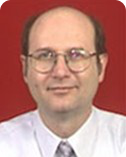Topic: Nuclear Medicine
Dr. Borrelli’s research is targeting therapies to diseased tissues to maximize treatment efficacy while minimizing adverse sequel in normal tissue. He also collaborates with scientists in his group on molecular targeting of breast cancer cells for diagnostic imaging, therapy and monitoring therapy. CT, MRI, PET, ultrasound and other forms of noninvasive imaging are being utilized in his research plan to diagnose disease, guide therapy to diseased sets, and assess treatment efficacy. Most of Dr. Borrelli’s research efforts are directed towards developing treatments for cancer using multiple modalities, working under the hypothesis that no single treatment modality is usually sufficient to cure cancer, establish local control, or manage it chronically, so that patients survive with a good quality of life. Radiotherapy, hyperthermia, chemotherapy, gene therapy, and nanotechnology are within the arsenal used to design the optimal treatment plan for each different type of cancer. The nanotechnology aspect of Dr. Borrelli’s research includes designing, producing, and utilizing liposomes, viral vectors, magnetic nanoparticles, and microbubbles to deliver drugs and other therapeutics to tumors and other diseased tissues. Some of these nanoparticles are tagged with molecules to help target them to the diseased tissues while others are triggered by localized application of physical stimuli, including heat, laser light, ionizing radiation, and ultrasound, to deliver their therapy at the diseased site. The latter permits localizing the therapeutic efficacy of these nanoparticles to where these triggering modalities are being applied to treat cancer and other diseases; which co-localizes multi-modality treatments and allowing for synergism between different treatments. Dr. Borrelli obtained his Ph.D. from the University of Illinois at Urbana-Champaign in Biophysics. He acquired his postdoctoral training at the University of California, San Francisco in Hyperthermia/Radiology.
